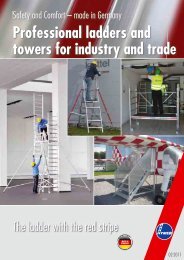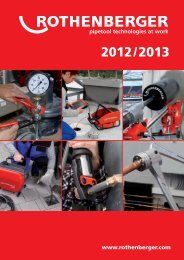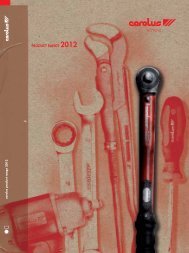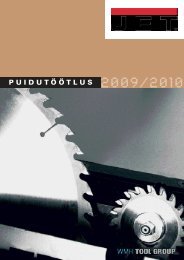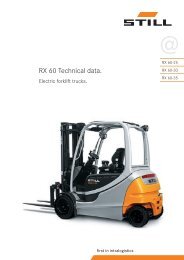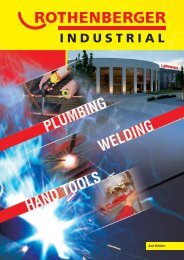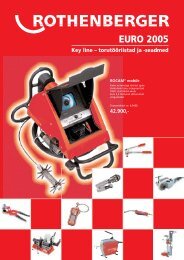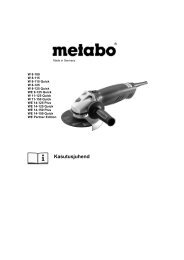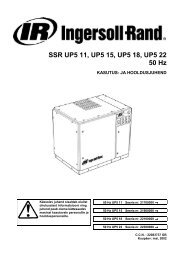TRUST MADE EASY.
TRUST MADE EASY.
TRUST MADE EASY.
Create successful ePaper yourself
Turn your PDF publications into a flip-book with our unique Google optimized e-Paper software.
PRODUCTS FOR SPECIAL APPLICATIONS | WALLPAPERING TABLES<br />
www.hymer-alu.de<br />
685200<br />
Wallpapering table extension<br />
G<br />
» For tables 6850 and 6851.<br />
» 200 mm wide (600 mm table extended to 800 mm wide,<br />
800 mm table extended to 1000 mm wide).<br />
» Simple assembly with wing bolts.<br />
» See also Accessories on page 147.<br />
Length<br />
Width<br />
Weight<br />
EAN code<br />
Order no.<br />
approx. m<br />
approx. mm<br />
approx. kg<br />
3.05<br />
200<br />
5.5<br />
4019502314467<br />
685200<br />
Successful advertising for small and medium-sized companies.<br />
Three questions about marketing that can help.<br />
There are more brands, products and services promoted with advertising spend than the<br />
number of words in people's active vocabulary. Nevertheless, every advertiser assumes<br />
that his message is getting home. This, despite the fact that the number of messages has<br />
increased exponentially in recent years through the Internet, TV channels, magazines, etc.<br />
How then can a small or medium-sized companies (SME) penetrate at all?<br />
Advertising must become a much stronger, fixed component of the marketing<br />
effort.<br />
What does this mean? Quite simply: products and services that a brand wish to make<br />
well-known must be presented very succinctly with regard to their particular features.<br />
Answering three apparently simple questions can help here:<br />
1. “What can I do better than my competitors?”<br />
This differentiation sharpens one's own profile and makes it stand out from the crowd.<br />
This is done by presenting a central, particularly eye-catching difference. Competitors<br />
in the same industry often also use the same arguments in their advertising. These<br />
arguments then lose any value.<br />
Incidentally: Among ladder manufacturers, these are always “quality, safety and innovation”.<br />
An intensive search for a real difference is therefore required. The more so as any<br />
differentiation is only useful if the customer is also able to draw some benefit from it.<br />
The next important question is therefore:<br />
2. “What does my customer get out of it?”<br />
It is generally not only about the particular quality of a product or service, but about what<br />
the customer wishes and is able to achieve with this. For example, a customer will not only<br />
want to cover up old stains with a high-quality paint, but will also want to satisfy irrational<br />
or unknown needs such as cleanliness, order etc. Or it is about achieving recognition within<br />
his social environment. If you have recognised the deeper meaning of your services or<br />
products and know what their strengths are by comparison with the competition, the last<br />
question is:<br />
3. “How will my customer find out about it?”<br />
Making your mark in a world of stimulus overload is a particular challenge. The time, place<br />
and form of the presentation are therefore significant in addition to the core message.<br />
When advertising with a witty joke or a celebrity, you need to take care that the slogan<br />
or the personality does not overwhelm the core message, but underlines it and that the<br />
company's brand personality is retained.<br />
Three questions, then, that are apparently easy to answer, but which demand an in-depth<br />
engagement with marketing and cannot be left to the advertisers alone if a company<br />
wishes to be successful.<br />
Dietmar Menze<br />
www.home-innovation.de<br />
35



